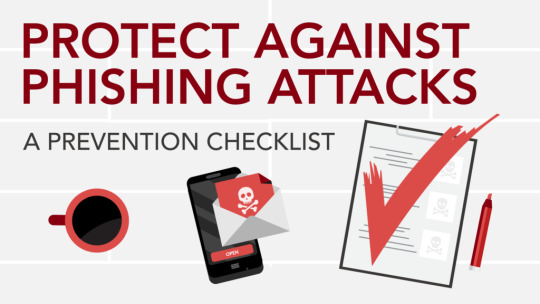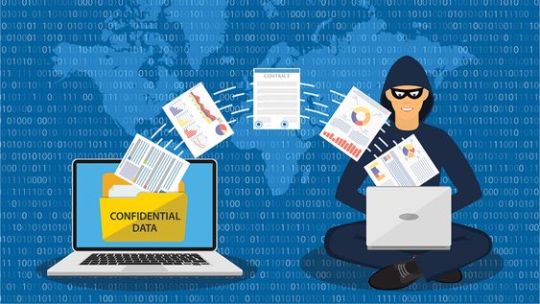Text
The birth of Artificial intelligence.

Artificial intelligence, or AI for short, is a technology that has been in development for decades. It all started in the 1950s, when scientists began exploring the possibility of creating machines that could think and learn like humans.
The earliest AI systems were based on simple rule-based algorithms that could perform specific tasks, such as playing chess or solving mathematical problems. While these systems were impressive for their time, they lacked the sophistication and flexibility of human intelligence.
In the 1960s and 70s, AI researchers began to develop more complex AI systems using machine learning techniques. These systems were designed to learn from experience, just like humans do. This led to the development of neural networks, which are designed to mimic the way the human brain works.
However, progress in AI was slow and research funding was limited. It wasn't until the 1990s that AI started to become more widely used in industry, particularly in fields such as finance, healthcare, and manufacturing. This was thanks to advances in computing power, which made it possible to process large amounts of data more quickly and efficiently.
In the 2000s, AI began to enter the mainstream, with the development of virtual assistants such as Siri and Alexa. These systems were designed to recognize human speech and respond to requests, marking a major milestone in the development of AI.
Today, AI is used in a wide range of applications, from image and speech recognition to self-driving cars and robotics. Deep learning techniques have allowed AI systems to process vast amounts of data and make decisions with greater accuracy and speed than ever before.
But despite all these advancements, there are still challenges to be overcome. For example, AI systems can be biased and lack the intuition and emotional intelligence that humans possess. There are also concerns about the impact of AI on jobs and society as a whole.
In conclusion, AI has come a long way since its early days, thanks to advances in computing power and machine learning techniques. While there are still challenges to be overcome, the potential for AI to revolutionize our lives is enormous. It's an exciting time to be involved in AI research and development.
1 note
·
View note
Text
Take Control of Your Email Privacy: Try a Temporary Email Address
Protecting yourself from phishing attacks is essential in today's world, where cyber criminals are constantly trying to steal personal information and sensitive data. One solution that can help you stay safe is by using a temporary email address. In this blog post, we'll explain how temporary emails work and how they can help you protect yourself against phishing attacks.

Introduction: Don't Let Phishing Attacks Steal Your Data
Phishing attacks are becoming increasingly common, and they can be devastating for those who fall victim to them. A phishing attack is a type of online scam where a cyber criminal sends an email or message that appears to be from a legitimate source, such as a bank or online store. The message usually contains a link or attachment that, when clicked, can infect your computer with malware or trick you into giving away your personal information.
Protecting yourself against phishing attacks is crucial, and one solution that can help is by using a temporary email address. Let's explore what a temporary email is and how it can help you stay safe online.
What is a Temporary Email Address?
A temporary email address is a disposable email address that you can use instead of your real email address. Temporary emails are often used to sign up for services that require an email address, such as online shopping or social media accounts. When you use a temporary email address, you don't have to give out your real email address, which can help protect your privacy and prevent spam emails.
How Can a Temporary Email Protect Against Phishing Attacks?
One of the primary ways that cyber criminals use phishing attacks is by sending emails that appear to be from legitimate sources, such as banks or online stores. These emails often contain links or attachments that, when clicked, can infect your computer with malware or trick you into giving away your personal information.
By using a temporary email address, you can protect yourself against these types of attacks. If you receive an email that appears to be from a bank or online store, but it was sent to your temporary email address, you can be sure that it is a phishing attempt. You can simply delete the email without opening it, which can prevent your computer from becoming infected with malware or your personal information from being compromised.
Benefits of Using a Temporary Email Address
Using a temporary email address can provide several benefits beyond protecting against phishing attacks. Here are a few:
Privacy:
When you use a temporary email address, you don't have to give out your real email address. This can help protect your privacy and prevent spam emails.
Convenience:
Temporary emails are easy to set up and can be used for a variety of online services.
Security:
By using a temporary email address, you can protect your computer from malware and other types of cyber attacks.

Conclusion: Protect Yourself with a Temporary Email Address
In today's world, where phishing attacks are becoming increasingly common, protecting yourself online is more important than ever. Using a temporary email address can be an effective way to protect yourself against these types of attacks. By keeping your real email address private, you can prevent cyber criminals from accessing your personal information and infecting your computer with malware. Give it a try and see how a temporary email address can help you stay safe online.
FAQ’s
Q: What is a temporary email address?
A: A temporary email address is a disposable email address that can be used instead of your real email address.
Q: How does a temporary email address protect against phishing attacks?
A: By using a temporary email address, you can prevent cyber criminals from accessing your personal information and infecting your computer with malware. If you receive an email that appears to be from a bank or online store, but it was sent to your temporary email address, you can be sure that it is a phishing attempt.
Q: What are the benefits of using a temporary email address?
A: Using a temporary email address can provide several benefits beyond protecting against phishing attacks. It can help protect your privacy, prevent spam emails, be convenient to use, and provide an added layer of security.
Q: How do I set up a temporary email address?
A: There are several online services that offer temporary email addresses, such as TempMail, Mailinator, and Guerrilla Mail. Simply visit their website, and you'll be able to create a temporary email address in just a few clicks.
Q: Can I use a temporary email address for all my online accounts?
A: Yes, you can use a temporary email address for most online services that require an email address. However, some services may require a verified email address, in which case you'll need to use your real email address.
0 notes
Text
Protect Your Privacy: Say Goodbye to Personal Email Addresses on Websites and Hello to Temp Mail
Introduction:
Our personal information is more at risk of being misused than ever as the internet becomes more and more commonplace in our lives. One way for our information to be compromised is if websites publish our personal email addresses. Your email address can be used to sign up for newsletters, promotional offers, or just to get in touch with the website owner. However, doing so exposes you to identity theft, phishing scams, and spam. The good news is that there is a simple fix: temporary mail.

What is Temp Mail?
When registering for websites or services, you can use Temp Mail, a temporary email address, instead of your personal one. Temp mail is also referred to as fake email, throwaway email, or disposable email. It's a quick and simple way to safeguard your privacy and stay clear of bothersome spam and phishing emails.
Why Use Temp Mail?
Use temporary email instead of your personal email address for the following reasons:
Privacy: You run the risk of disclosing your personal information to outside parties when you use your personal email address. Your personal information is kept private when using temporary mail.
Spam: Unwanted spam and marketing emails can be prevented with the help of temporary mail. You can easily delete the temporary email address once you're finished using the website or service to stop receiving emails in the future.
Security: Using temporary mail lowers the chance of identity theft and phishing scams. Your private email address won't be exposed if a website or service is compromised.
How to Use Temp Mail?
It's simple to use temp mail. There are numerous websites that provide free temporary mail services. This is how to apply it:
Visit a website dedicated to temporary mail, such as https://temp-maill.org/en.
Pick a domain name and username.
When registering for the website or service, use the temporary email address.
If there are any confirmation emails or messages, check the temporary mail inbox.
Delete the temporary mail address after you've finished using the website or service.
Benefits of using temp mail:
It has a number of advantages that make using temporary mail a great choice for online privacy protection. The following are a few advantages of using temporary mail:
Protect your personal information: You run the risk of disclosing your personal information to outside parties when you use your personal email address. Your personal information is anonymous and secure with the aid of temporary mail.
Reduces spam: Unwanted spam and marketing emails can be prevented with the help of temporary mail. You can easily delete the temporary email address once you're finished using the website or service to stop receiving emails in the future.
Saves time: By removing the need to sort through spam in your personal email inbox, using temp mail saves you time.
Easy to use: Temp mail is simple to use and doesn't need to be set up. Simply go to a temporary email website and create an account there.
No commitment: For services or websites with which you don't want a long-term commitment, temporary mail is ideal. To sign up, you can use a temporary email address, which you can later delete.
Protects against phishing scams: Since the hackers won't have access to your personal email address, using temporary mail lowers your risk of falling for phishing scams.
Keeps your personal email organized:
Utilizing temporary email allows you to maintain organization and reduce clutter in your personal inbox.
Overall, using temporary email is a clever and easy way to safeguard your online privacy and lessen unwanted spam in your personal email inbox.

FAQs:
Is temp mail legal?
Temp mail is legitimate, yes. It's a valid strategy for maintaining your privacy and preventing spam emails.
Can I use temp mail for important emails?
No, it is not advisable to use temporary mail for important emails. Only temporary uses should be made of temp mail.
Can I reply to emails sent to my temp mail address?
Your temporary mail address does not allow you to reply to emails. Temp mail should only be used for one-way conversations.
Are temp mail services free?
Yes, most temp mail services are free. However, some services might charge extra for extra features.
How long does a temp mail address last?
For a few hours or days, most temporary mail addresses are in use. Some services might provide longer time frames. It's important to delete the temp mail address once you're done using it.
Conclusion:
Online privacy protection is more crucial than ever. Protecting your personal information and preventing unsolicited emails are both easy and effective when you use a temporary email address. Therefore, instead of entering your personal email address when you sign up for a website or service, think about using temporary mail.
0 notes
Text
5 Common Phishing Attacks
The 5 common types of phishing attacks are as mentioned below :-
Whaling
Spear phishing
Angler phishing
Smishing and vishing
Email phishing
1.) What is Whaling?
Fraudsters don't just target executives for spear phishing attacks - they target anyone in an organisation to launch their "whaling" attacks. Once they have the login credentials of an executive, criminals can then conduct the second phase of business email compromise (BEC) scams, known as CEO fraud. In this type of attack, cybercriminals use the compromised executive email accounts to authorise fraudulent wire transfers to their own financial institutions or request W-2 information for every employee to file fake tax returns or even post it on the dark web. Protect your organisation from cybercriminals and their whaling attacks by continuously ramping up your cybersecurity efforts.
Examples of Whaling Attacks.
In 2016, Snapchat became the victim of a whaling attack in which a high-ranking employee was tricked by a malicious email impersonating the company's CEO. The employee unwittingly revealed employee payroll information, leading Snapchat to report the incident to the FBI and offer two years of free identity theft insurance for their employees.The impact of whaling attacks was felt elsewhere, with Seagate's 2016 security breach resulting in the exposure of nearly 10,000 current and former employee W-2 forms, leaving them vulnerable to identity theft and income tax refund fraud.
More recently, in 2016, FACC AG CEO Walter Stephan was removed from his post after being tricked by a whaling attack that resulted in the company wiring over $56 million to fraudsters. It was one of the largest sums of money lost due to a whaling attack.
This serves to demonstrate the serious risk posed by whaling attacks, making it all the more crucial for company executives and employees to stay vigilant of potential malicious emails.
2.) What is Spear phishing ?
The goal of spear phishing is to acquire sensitive information such as usernames, passwords, and personal information. When a malicious link in a phishing email is opened, it can open a malicious site, which could download malicious programs or pieces of code onto a user's computer. In some cases, a malicious attachment may be opened, containing software or code which can cause further damage. Protect your sensitive information by being aware of digital threats like spear phishing.
Examples of Spear phishing Attacks.
It's no secret that cybercrimes have reached an astonishing level and it's only getting worse. In 2022 alone, more than 255 million phishing attacks have already been reported. It's undoubtedly scary to consider the amount of cyber-attacks that could potentially go unnoticed.
To combat such threats, it is essential to understand different types of spear phishing campaigns and their respective tactics. This blog focuses on understanding and preventing spear phishing examples and types.
Spear phishing is a targeted technique with malicious intentions, like stealing data, spreading malware and damaging the targets' organisations. By knowing how to recognize common spear phishing attacks and taking preemptive measures, organisations can increase their security and take effective defensive actions against threats.
3.) What is Angler phishing ?
Angler phishing is an increasingly common social media threat that uses bogus corporate accounts to launch targeted phishing attacks. Unlike traditional phishing scams, which use email spoofing to try and appear legitimate, angler phishing attacks leverage the immediacy and trust of social media to trick unsuspecting users.
Here’s how it works: Cyber criminals will masquerade as real corporate accounts, typically on popular social networks like Facebook, Twitter, or Instagram. They send out malicious links or messages that may look like they’re coming from a legitimate company, prompting users to provide confidential personal or financial information. Once the data is obtained, it can be used to commit fraud or identity theft.
The best way to protect yourself against angler phishing attacks is to be wary of any messages, links, or requests for personal information that come from corporate accounts. If you’re in doubt, don’t click the link—conduct further research to determine if the link is from a legitimate source, or contact the company directly using trusted contact information.
Examples of Angler phishing Attacks.
As this example demonstrates, angler phishing is often enabled by the amount of individuals voicing their grievances against organisations directly on social media. Organisations may attempt to rectify the situation through reparation or a refund, but this is often exploited by scammers who hijack the response, asking the customer to provide personal details in order to seemingly facilitate compensation. Unfortunately, this is done with the intent of compromising their accounts.
3.) What are Smishing and vishing Attacks?
The difference between smishing, vishing, and phishing. All three of these terms refer to social engineering attacks—criminals deducing credentials and data through manipulation and deception.
Phishing is often deemed as solely email-based since 96% of phishing attacks are conducted via email. Though it’s immensely important to protect against email phishing, it is equally essential to look out for threats related to mainly smishing and vishing attacks, in addition to social media phishing.
Examples of Smishing and vishing Attacks.
Beware of smishing and vishing - cybercriminals are using your phone as a way to get your personal information. If someone calls you to confirm your mailing address or credit card number or a text message requests your confirmation of an Amazon shipment, these are attempts at smishing and vishing cyberattacks. Don't give out any personal information on the phone and protect yourself from these malicious attempts.
4.) What Are Email Phishing Attacks?
Phishing is a form of social engineering attack that preys on the human element. Attackers craft malicious emails that are designed to appear legitimate in an effort to fool users into providing personal information or executing malicious code. In some cases, the emails may ask you to enter passwords, credit card details, or other sensitive data.
Typically these emails will use one or more of the following social engineering techniques: misdirection, forgery and deception. All these methods are used to persuade victims to act without considering the consequences. It's important to be aware of phishing attempts and never open emails from unknown senders. Also, don't click links provided in emails coming from untrusted sources and never enter sensitive information on websites that you didn't reach directly from your browser.
Examples Of Email Phishing Attacks
Attackers often use fear and an urgent tone to manipulate their targets into taking action, such as responding to an email or downloading a Link. They commonly tell users that their account is restricted or will be suspended if they don’t respond, creating a sense of urgency that can cloud judgement. Even professionals with security expertise can fall victim to phishing occasionally, underscoring how easy it is to be fooled when one is fearful or distracted.
Phishing emails are usually sent to large groups of people, so the greeting is usually generic. For example, it may simply say “Hello,” with no personalization. Be wary of emails like this, because they’re often a sign that someone is trying to manipulate you. If you're not sure if an email is legitimate, never take any action or click on any links .
1 note
·
View note
Text
7 Steps To Protect Yourself Against Corporate Spear Phishing

Corporate spear phishing attacks are a serious threat to businesses of all sizes. These targeted attacks are designed to trick employees into divulging information or installing malware on corporate systems, putting the organization at risk of data breaches, financial losses, and reputational damage. To protect yourself against corporate spear phishing attacks, it is important to be aware of the risks and take proactive steps to secure your accounts and devices. By following the 7 steps outlined above - being vigilant, using strong passwords and multi-factor authentication, keeping software up to date, using a VPN, and participating in regular security training - you can reduce the risk of falling victim to these types of attacks.

Phishing:
Phishing is a type of cyberattack where an attacker tries to trick individuals into divulging sensitive information such as usernames, passwords, credit card details, or other personal information.
This is typically done through emails, text messages, or other forms of communication that appear to come from a legitimate source, such as a bank, a social media platform, or an e-commerce site.
Phishing attacks can be sophisticated and difficult to detect, but there are some common red flags to look out for, such as misspellings, unfamiliar senders, urgent requests, and generic greetings instead of personalized ones.
Steps To Protect Corporate Spear Phishing Attacks:
Corporate spear phishing attacks are a type of targeted phishing attack that targets specific individuals or groups within an organization. Here are seven steps you can take to protect yourself against corporate spear phishing attacks:
Be aware of the risks: Understand the risks associated with corporate spear phishing attacks, including the potential loss of sensitive information or financial resources.
Stay vigilant: Be aware of any suspicious emails or messages that request sensitive information or appear to come from a trusted source. Double-check the sender's email address, as well as any links or attachments included in the message.
Use strong passwords: Use strong, unique passwords for all of your accounts, and avoid using the same password across multiple accounts. Consider using a password manager to help keep track of your passwords.
Enable multi-factor authentication: Enable multi-factor authentication on all of your accounts, including your corporate accounts. This adds an additional layer of security and makes it more difficult for attackers to gain access to your accounts.
Keep your software up to date: Make sure that your computer and software are up to date with the latest security patches and updates. This can help to prevent attackers from exploiting known vulnerabilities.
Use a VPN: Use a virtual private network (VPN) to encrypt your internet traffic and protect your online privacy. This is particularly important when accessing corporate networks or using public Wi-Fi.
Get regular security training: Participate in regular security training and awareness programs to learn about the latest phishing techniques and best practices for protecting yourself against these types of attacks.
How temp mail is used to protect yourself against corporate spear phishing:
Temporary email services also known as “temp mail”, can be useful in protecting your personal email address from spam and other unwanted messages.
But, they may not be useful tool for protecting yourself against corporate spear phishing attacks.
This is because many corporate spear phishing attacks are designed to specifically target high-level executives or employees with access to sensitive information or financial resources, and are often customized to appear as legitimate as possible.
Instead, to protect yourself against corporate spear phishing attacks, it is important to follow best practices such as using strong and unique passwords, enabling multi-factor authentication, and being vigilant about suspicious messages or requests.

Conclusion:
Protecting yourself against corporate spear phishing attacks is critical to safeguarding your personal information and the assets of your organization. These targeted attacks can be devastating and difficult to detect, as they often use sophisticated social engineering techniques to trick employees into divulging sensitive information or installing malware on corporate systems.
By taking proactive steps to secure your accounts and devices and staying vigilant against suspicious messages or requests, you can reduce the risk of falling victim to corporate spear phishing attacks and help to protect your organization's valuable assets and information.
FAQS:
What is corporate spear phishing?
Corporate spear phishing is a type of targeted cyber attack where an attacker sends personalized messages to employees within a specific organization, often using social engineering techniques to trick them into divulging sensitive information or installing malware on corporate systems.
How can I protect myself against corporate spear phishing?
To protect yourself against corporate spear phishing attacks, it is important to follow best practices such as using strong passwords, enabling multi-factor authentication, keeping software up to date, using a VPN, and participating in regular security training.
2 notes
·
View notes